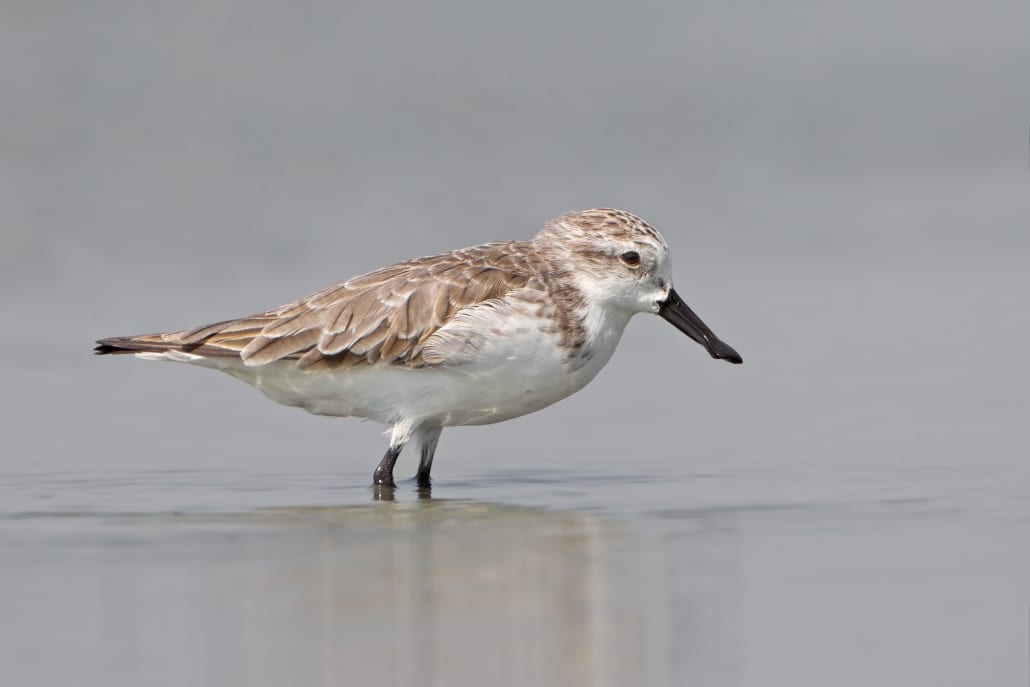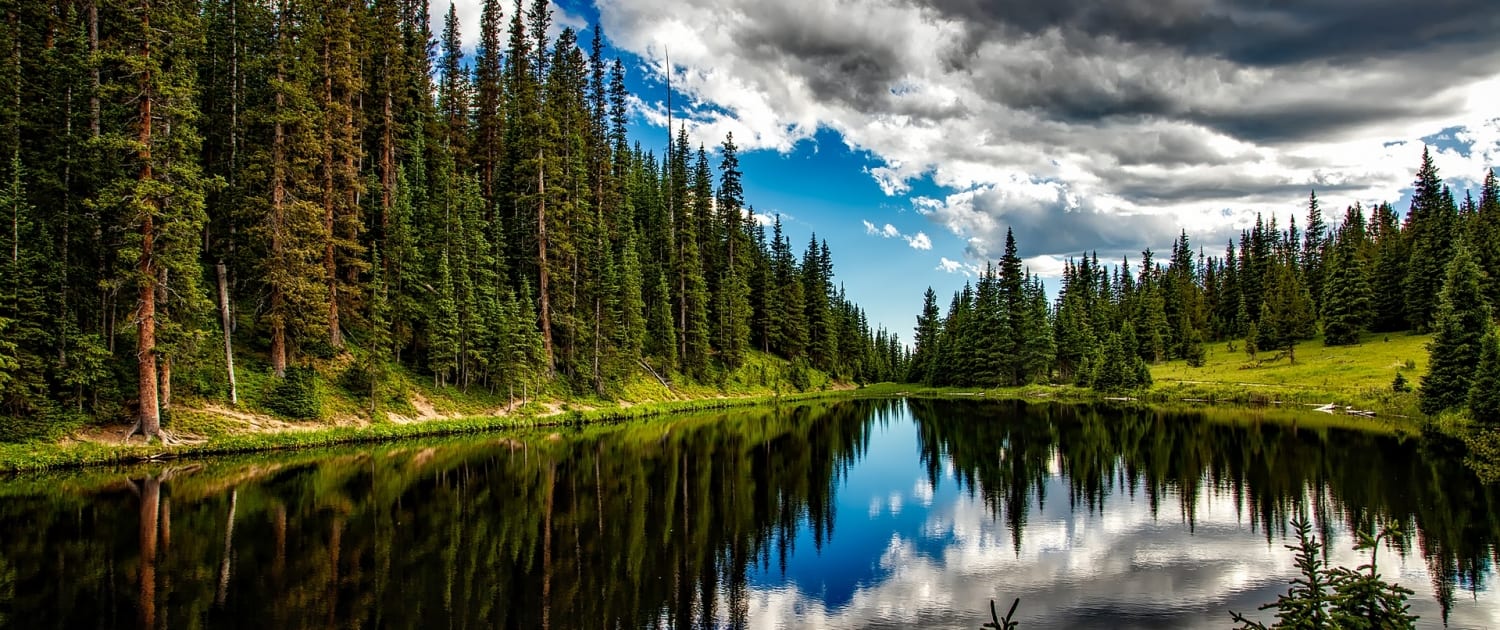Conservation Basics: The Spoon-billed Sandpiper is a Coffee Snob
Title photo courtesy of Bird Conservation Society of Thailand.
Rainforest Trust’s work to protect habitats for threatened species is grounded in cutting-edge conservation science. But in this series, we explore the basics of conservation science and how they inform Rainforest Trust’s scientists.
“I’ll take a single origin, double-espresso, one decaf, almond milk latte with a splash of whole milk and a 70:20:10 mix of sugar, artificial sweetener and cocoa powder in a non-white porcelain mug washed with tepid water 45 seconds before pouring the first espresso but 23 seconds after steaming the milk,” said the Spoon-billed Sandpiper, before adding, “You know what, can you make two of those?”
“What’s the name?” asked the barista.
“Calidris pygmaea,” said the Spoon-billed Sandpiper.
“Spelling?” asked the barista.

A Spoon-billed Sandpiper: A Critically Endangered species and a really picky coffee drinker. Photo by JJ Harrison/CC 3.0
I hate to anthropomorphize. But I’m trying to make a point here.
Before I explain why I’m being so hard on the colorful and Critically Endangered Spoon-billed Sandpiper (a magnificent bird), let me ask that if you haven’t read my earlier piece on habitat, please go do so now. But assuming you have, I’ll get right to the point.
When you walk into a coffee shop, you might assume you can choose a few options such as a latte or a cold brew.
You would be wrong.
Coffee is brimming with possibilities. We can customize any variable, from the coffee tree seedling to the time you take a sip. Where did the beans grow? At what elevation? How were they roasted? When were they roasted? What’s the temperature of the water? How long is the brewing cycle? How much lactose do you want in your milk?

So many options!
The list could go on forever. But now, unlike a recent battle with an extended metaphor involving tortilla chips, I will break out of this extended metaphor involving coffee for good.
We might think habitat only comes in a few varieties such as grassland, rainforest, mountains or ocean.
But again, we would be wrong. Habitat comes in as many varieties as you could imagine.
Looking out the window here at Rainforest Trust headquarters in Virginia, I see trees. Hence, we’re in a forest. I can tell they are mainly deciduous trees, but some conifers dot the landscape. So our office is in a mostly deciduous forest.
Virginia is in a temperate climatic zone, making this space a temperate mostly deciduous forest. Besides that, we get periods of rain or snow year round, making it a seasonal temperate mostly deciduous forest.
A little further away, I can see a field of tall grass, a freshwater lake and a creek. So while this building might be in a mostly deciduous forest, this patch of land is a seasonal temperate mostly deciduous forest stand within a forest, grassland and freshwater mosaic. Add in the cow pasture next door and we’re in an agriculturally influenced forest, grassland and freshwater mosaic.
I wouldn’t know how to categorize this patch of land any further without detailed evaluations, but the specificity doesn’t stop there. Any variable you can measure or differentiate between two patches of land can be a differentiation in habitat.

A temperate, coniferous forest with freshwater patches at altitude.
You might think these minutiae are ridiculous. The Spoon-billed Sandpiper would disagree. Under the “Habitat and Ecology” section on the IUCN Red List’s description of the Spoon-billed Sandpiper, it says the bird “has a very specialised breeding habitat, using only lagoon spits with crowberry-lichen vegetation or dwarf birch and willow sedges, together with adjacent estuary or mudflat habitats that are used as feeding sites by adults during nesting. The species has never been recorded breeding further than 5 km (and exceptionally once, 7 km) from the sea shore… During winter it prefers mixed sandy tidal mudflats with an uneven surface and very shallow water, mainly in the outermost parts of river deltas and outer islands, often with a higher sand content and thin mud layer on top.”
How’s that for a coffee order?
[Author Note: The fact that the the difference between 7 km and 5 km from the sea is described as “exceptional” is exceptional.]
I jest, but these specifics are tantamount to many species’ existence. That’s the wonder of biodiversity; through evolution, each species found a niche for itself, different from the niches of any other species. I dare say it’s poetic and inspiring.
Some species don’t have the same stringent requirements. Unlike the Spoon-billed Sandpiper, the White-tailed Deer has its requirements met “in practically every ecological type including grasslands, prairies and plains, mountains, hardwoods, coniferous and tropical forests, deserts, and even in woodlots associated with farmland.” That’s equivalent to walking into a coffee shop and saying “Give me something liquid.”

The White-tailed Deer’s coffee order.
Differences in habitat preference specificity mean that some species are at a higher risk of extinction than others. Spoon-billed Sandpipers occupy such a narrow range of habitat types that when one bit of habitat disappears, it can be a major blow to the species. In fact, the Red List notes that “throughout its migratory and wintering ranges, tidal flats are being reclaimed for coastal development (industry, leisure, infrastructure, aquaculture and agriculture) and are becoming increasingly polluted.” There are so few areas of habitat available that it’s easy to eradicate most of it. To do the same with the White-tailed Deer’s habitat you would need to pave most of the North American continent.
Here at Rainforest Trust, we protect habitat for endangered and critically endangered species. Often, part of the reason these species are Endangered or Critically Endangered is because most of the rest of their habitat is already gone. I can’t overstate habitat’s importance; many experts agree that habitat loss is the leading cause of extinction worldwide.

What lives in your habitat?
We look at the state of a species’ habitat — how much remains, protected status, decline rate — and use that information to help protect them. But habitat isn’t just for the wonks and researchers. You can see habitat. Look outside your window, no matter if you’re in a big city or on a farm or in the suburbs or in the woods. What is living around you? Eastern Grey Squirrels and American Robins? Giraffes? White Pelicans? Elephant Seals? Monarch Butterflies? Maple Trees? What else is living around you? I promise that no matter where you are, you’re bound to discover something in your habitat that surprises you.
So go forth! Explore! Help the future of conservation by learning more about your backyard. You can even take along a cup of coffee (no matter how you take it).





